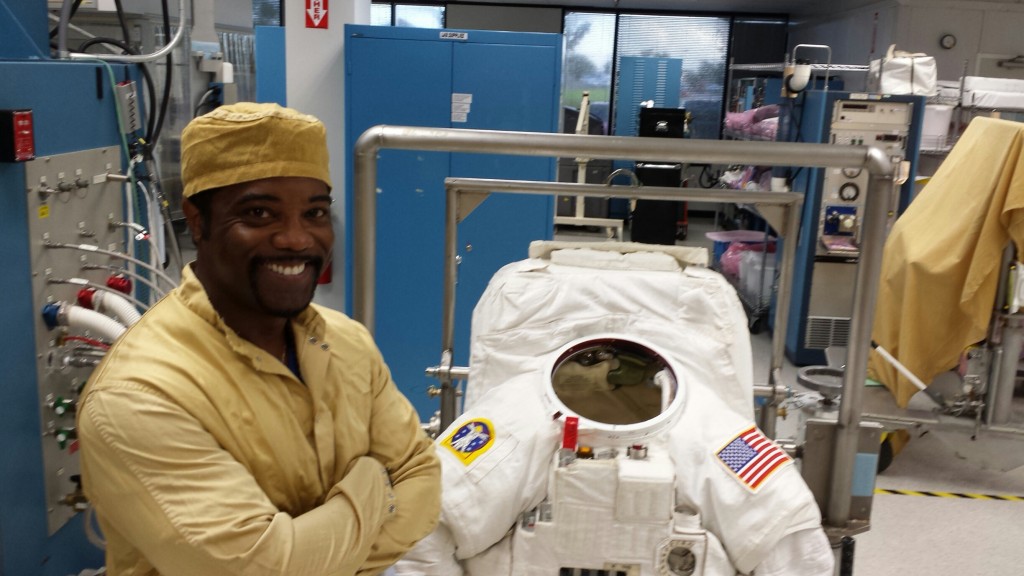
NASHVILLE, Tenn. (TSU News Service) – A team of engineering students from Tennessee State University joined 15 other universities and three service academies at Arnold Air Force Base recently to find a solution to a problem routinely encountered by members of the military…designing a portable one-man heavy lifting device capable of lifting 45,000 pounds.
The teams came together April 14-17 at Arnold Engineering Development Complex in middle Tennessee for the annual Air Force Research Laboratory Collegiate and Service Academy Engineering Design Competition. TSU fielded a 12-person team and joined forces with Prairie View A&M University. Students represented the fields of mechanical design, electrical and computer engineering, and computer science.
Now in its third year, the competition revolves around a single engineering challenge aimed at fostering innovative and creative solutions. This year’s challenge centered on a problem routinely faced by U.S. Air Force pararescuemen and other military units. The weight of armored vehicles and frequent encounters with improvised explosive devices or damage from combat operations occasionally require these up-armored vehicles be lifted to rescue fellow soldiers pinned or trapped inside. These heavy lift devices are also routinely used in rescue operations of collapsed structures or downed aircraft.
The challenge this year was to design a lifting device that was portable, lightweight, and could lift a structure, aircraft or armored vehicles at least 24 inches high that would effectively lift a 45,000-pound vehicle sufficient to retrieve trapped personnel.
“The current constraint is the inability to make kits available in small enough volume and weight factor,” said Dr. Fenghui Yao, professor of Computer Science and the team’s leader. “A successful rescue is a controlled operation that is immediately deployed to prevent crushing or further damage to equipment and personnel. Our mindset was to ‘lift an inch, shore an inch’ for stability of lifting the heavy load.”
Devon Parker, a senior Air Force mechanical engineer at AEDC, was the host and manager for the national competition on behalf of the Air Force Research Laboratory. In addition to managing the competition, he provided regular feedback to the design teams throughout the academic year during design reviews. While this was designed principally to ensure the teams fully understood the problem, it also allowed him to ensure the trial phase conducted at AEDC could safely accommodate all of the various design entries during demonstration.
“The challenge was a 40,000-pound bulldozer resting on an deep incline deep within the Tennessee Guard Volunteer Training Site,” said Parker. “The competition and the teams were supported by a number of experienced Air Force pararescuemen from around the country – who performed work under the load for the student teams, as instructed by the respective student team leader.”
The team from Tennessee State University developed and designed two solutions to the problem. According to Yao, the first solution was entered and competition along with the solution provided by the Prairie View students. Both were able to execute the required lifting task successfully.
Ultimately, the team from Auburn University delivered a design solution that met the objective while also achieving significant progress in many of the additional design constraints. Their solution consisted of a mixed air bag system, built of Kevlar and Vectran in their own laboratory.
Regardless of their performance on the field trial, there were portions of each entry that offered further opportunity for creative development. There were mechanical, hydraulic, pneumatic, and hybrid solutions developed and demonstrated, said Parker.
“Engineering designs and team creativity were all put to the test,” he said. “Regardless of individual results, every team came away with a more profound understanding of why it is essential that engineers leave their office desks and get their hands dirty when working on a problem.”
Even though the joint TSU/Prairie View A&M team did not win the competition, it provided valuable design experience for the students.
“It is this type of first-hand experience that enables engineers to fully comprehend the scope of any problem,” said Yao. “It allows them to work more effectively as part of any product development or problem solving team.”
Dr. Landon Onyebueke, professor of Mechanical Engineering; and Dr. Saleh Zein-Sabatto, professor of Electrical and Computer Engineering, assisted Yao and the Challenge team.
Department of Media Relations
Tennessee State University
3500 John Merritt Boulevard
Nashville, Tennessee 37209
615.963.5331
About Tennessee State University
With nearly 9,000 students, Tennessee State University is Nashville’s only public university, and is a comprehensive, urban, co-educational, land-grant university offering 38 undergraduate, 22 graduate and seven doctoral programs. TSU has earned a top 20 ranking for Historically Black Colleges and Universities according to U.S. News and World Report, and rated as one of the top universities in the country by Washington Monthly for social mobility, research and community service. Founded in 1912, Tennessee State University celebrated 100 years in Nashville during 2012. Visit the University online at tnstate.edu.
